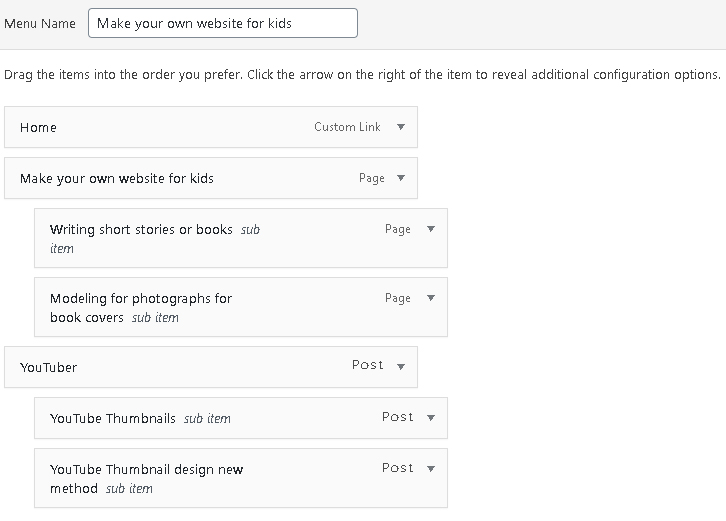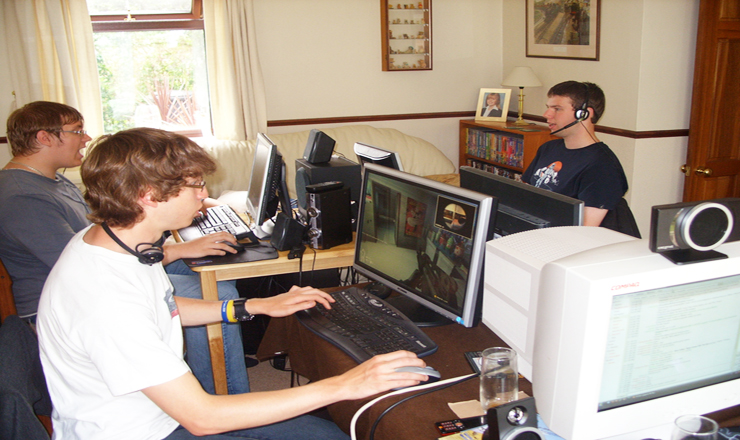
An integral part of any business that is successful are UI/UX developers. They create innovative products and services that satisfy users. These solutions are developed using a process that is constantly improving. Before a project can proceed, designers need to fully understand users' expectations and needs.
To become a UI/UX designer, you need to first learn the basic design principles. This will allow to plan the layout and flow for your product. Also, it is important to get familiarity with the various tools and technologies involved in product design.

UX books, podcasts and other resources can also be helpful in preparing yourself for your new role. Some top universities offer online UX design programs. Choosing a program that is a mix of both formal and informal learning is a good way to get started. Online programs allow students to earn their degree from the comfort of their own homes.
While you're learning, you should also begin to build a portfolio. Your portfolio will showcase your skills to potential employers or recruiters. Be sure to include projects that are representative of the type of work you are interested in doing. The more projects that you have worked on, the better.
A portfolio is crucial if you wish to be a UI/UX designer. A good portfolio will showcase your expertise and show prospective employers your commitment to your career. However, a portfolio is only one component of a successful career in UX. The networking you do is another component of a successful career in UX. There are several ways to network, from attending formal events to connecting with other designers.
Networking can be a great way of meeting others interested in a career UX. It's a great way to meet other designers and gain motivation, collaboration, as well as having fun. Creating a professional network will also make it easier to get hired.

As you begin your job search, it is important to understand how to conduct user surveys and translate those findings into a product design. You should also learn how to use the design sprint method to identify problem spaces and develop solutions.
Your best chance to start a new career is to develop your design skills. During your training you should have the chance to take part in various UX design tasks. These projects will give you the opportunity to learn a wide variety of UI design elements, including responsive.
A network of industry mentors and friends is a must. For ideas and support, you can make use of the Internet or join groups such the UI/UX Collective. A networking group can be fun, even if you're not looking for work.
Online training and vocational courses are also available. These programs will help you to develop hard skills. For example, you can choose to study a certificate in graphic design. The program will teach you the fundamental design principles and industry-standard tools as well as typography. You will also learn how you can maintain a pattern repository and create low-fidelity software applications.
FAQ
What is responsive web design?
Responsive Web Design, also known as RWD, is a way of designing websites so that content displays on all devices. This includes desktop computers, tablets (tablets), smartphones, etc. This allows visitors to view the website on one device and access other features like buttons, navigation menus, etc. The goal of RWD is to ensure that when a user views a site on any screen size, they view the exact version of the site.
Consider, for instance, that you're building a website for an eCommerce company and your products are sold primarily online. It is important to ensure that your website can be accessed on any device, including a smartphone.
A responsive website will adjust its layout automatically based on what device is used to view it. Your laptop will view the website exactly as a normal desktop site. However, if you're viewing the page on your phone, it will display differently.
This means that you can create one website that looks great across all devices.
What is website design software?
Website design software is used by graphic artists, photographers, illustrators, writers, and others involved in visual media to create webpages and other digital materials.
There are two types main website design software options: desktop apps and cloud-based. Desktop apps are installed locally on your computer and require you to install additional software on your computer. Cloud-based apps are hosted remotely on the Internet and do not require any additional software. This makes them perfect for mobile users.
Desktop Applications
Although desktop applications are more powerful than those offered by cloud-based services, they may not be necessary. Some people prefer to only use a desktop program because it is easier and more convenient. Others like to use the same tool regardless of whether they are working on a laptop or a smartphone.
Cloud-Based Solutions
Web designers who wish to save time or money should consider a cloud-based option. These services allow you to edit any type of document from anywhere that has an internet connection. You can use your tablet to work while you wait for your coffee brew.
You will still need to buy a license if you choose to use a cloud-based program. You don't have to buy additional licenses for upgrading to the latest version.
These programs can be used in Photoshop, InDesign, Illustrator or any other Adobe product to create web pages.
What Should I Include In My Portfolio?
These things should make up your portfolio.
-
You can also see examples of your previous work.
-
Links to your website (if applicable).
-
These are links to your blog.
-
Here are some links to social media pages.
-
You can also find links to other designers' portfolios online.
-
Any awards you've received.
-
References.
-
Take samples of your work.
-
These links will help you communicate with clients.
-
Here are some links to show that you're eager to learn new technologies.
-
You are flexible, these links will show it.
-
Links showing your personality.
-
Videos showing your skills.
Do I require technical skills to design or build my website?
No. It doesn't matter what HTML or CSS you know. Online tutorials can be found that cover both HTML and CSS.
Should I hire someone to design my website or do it myself.
Don't pay for web design services if you want to save money. Hiring someone else to make your website is a good option if you're looking for quality results.
The truth is, there are many different ways to build websites from scratch without the need for expensive professional designers.
If you're willing to put in the time and effort, you can learn how to make a great-looking site yourself using free tools like Dreamweaver and Photoshop.
Consider outsourcing your project to an experienced freelancer web developer who charges hourly instead of per-project.
How can I make a website for free?
It depends on what type of website you want to create. Do you want to sell products online? Start a blog? Build a portfolio?
You can make an essential website using only HTML and CSS (a combination of HyperText Markup Language and Cascading Style Sheets). You can create a simple website with HTML and CSS. But most web developers recommend using a WYSIWYG editor (such as Dreamweaver, Frontpage).
You might consider hiring a freelance designer if you don’t know how to design websites. They will help you design a website that suits your specific needs.
Freelancers can charge a flat fee or an hourly rate. It depends on the amount of work that they do in a given time frame.
For example, you might pay $50-$100 an hour to a company. Higher rates will be charged for larger projects.
Many freelance websites also list open jobs. You can also search on those websites before you reach out to developers.
Statistics
- Is your web design optimized for mobile? Over 50% of internet users browse websites using a mobile device. (wix.com)
- In fact, according to Color Matters, a signature color can boost brand recognition by 80%. There's a lot of psychology behind people's perception of color, so it's important to understand how it's used with your industry. (websitebuilderexpert.com)
- Did you know videos can boost organic search traffic to your website by 157%? (wix.com)
- The average website user will read about 20% of the text on any given page, so it's crucial to entice them with an appropriate vibe. (websitebuilderexpert.com)
- When choosing your website color scheme, a general rule is to limit yourself to three shades: one primary color (60% of the mix), one secondary color (30%), and one accent color (10%). (wix.com)
External Links
How To
What is website hosting?
Website hosting refers simply to the place that people visit when they visit a website. There are two types of website hosting:
-
The cheapest option is shared hosting. Your website files reside in a server managed by another company. When customers visit your site, their requests travel over the Internet to that server. The owner of the server then hands off the request to you.
-
Dedicated hosting: This is the most costly option. Your website is hosted entirely on one server. You and your traffic are protected by the fact that no other websites share server space.
Shared hosting is cheaper than dedicated hosting for most businesses. With shared hosting, the company that owns the server provides the resources needed to run your website.
But there are pros and cons to both options. Here are the differences:
Shared Hosting Pros
-
Lower Cost
-
Easy To Set Up
-
Frequent Updates
-
It can be found on many web hosting companies
Hosting shared with others can cost as low as $10/month. This price often includes bandwidth. Bandwidth describes the amount of data that can be transferred over the Internet. So even if you only upload photos to your blog, you may still pay extra money for high amounts of data transferred through your account.
Once you begin, you will soon see why you spent so much on your previous host. Many shared hosts offer very little customer support. While they may occasionally assist you in setting up your site and other tasks, after that you are all on your own.
It is important to find a provider that provides 24-hour support. They'll take care of any issues that come up while you sleep.
Cons of dedicated hosting
-
More Expensive
-
Less common
-
Specific Skills Required
With dedicated hosting, you get everything you need to run your website. You won't worry about how much bandwidth you are using or how much RAM (random Access Memory) you have.
This means that you'll spend a bit more upfront. Once you get started with your online business, you will find that you don't require much technical support. You'll soon be an expert at managing servers.
Which Is Better For My Business:
This depends on the kind of website that you want. If you are selling products, shared hosting may be the best option. It's easy to set up and maintain. You'll probably receive frequent updates because you are sharing a server hosting many other sites.
If you want to create a community around a brand, dedicated hosting may be the best choice. Instead of worrying about traffic, you can concentrate on building your brand.
Bluehost.com has both. Bluehost.com offers unlimited monthly data transfers, 24/7 customer support, domain registrations free of charge, and a 30-day guarantee for your money back.